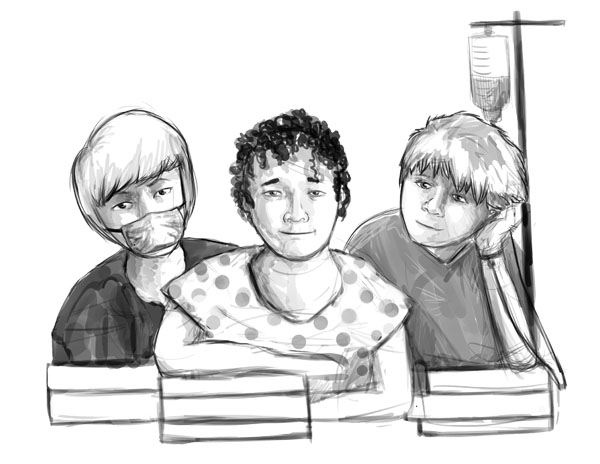
In the photo, the little girl poses next to her teacher, her face a picture of delight. A teacher sits to her left, matching her bright smile. This is Lindsey Bingham at the Lucile Packard Children Hospital School, and she successfully underwent a heart transplant in February last year.
On May 20, 2012, Bingham was diagnosed with a heart defect called dilated cardiomyopathy, according to the Heart for Binghams website, which is raising awareness and donations for the Bingham family.
While at the hospital, Bingham had few opportunities to go outside or play with her friends — until she signed up for the hospital school.
“Living in a hospital for that long, every day can seem exactly like the one before,” says Stacey Bingham, Lindsey’s mother. “The school gave her the chance to get out of her room and change things up a little.”
Founded in 1924, the Lucile Packard Children Hospital School provides free education to patients at the hospital. The LPHS is both part of the Stanford Hospital and of Palo Alto Unified School District, and includes a total of eight staff members who teach primary, middle and high school sections. The school also provides the children with personal computers to aid their studies.
Bingham is not the only one who benefited from the hospital school and appreciates its support. Sasha Harrison, a former Palo Alto High School student, was also diagnosed with a heart condition during her freshman year when she was getting a routine check-up for her sport. Her family sent her to the Stanford Hospital after they were informed about the illness, and she ended up staying there for almost two weeks.
Life at the hospital was very difficult, both for Lindsey and Harrison, but both looked forward to going to the hospital school.
“The teacher was supportive and cheerful, and I definitely liked him,” Harrison says. “It was a pleasant contrast to the hysteria of the rest of the place.”
As a result, Harrison was able to keep up with school where many might founder during the time she spent at the hospital.
“Our purpose is to make their transition [back] to their old school easier,” says Kathy Ho, an instructor at LPHS.
The number of children in class constantly varies based on the different health needs of each child, but on a normal basis there are about 30 to 40 kids to whom the school caters, either in the classrooms or at their bedsides.
“In the classroom, everything is individualized, much like a tutoring center,” Ho says.
The teachers develop extremely close relationships with their students and are familiar with their medical conditions.
“We get these connections with kids. I really value the bond with my current and former patients,” Ho says.
The teachers at the hospital school also try to plan daily activities for the kids throughout the year. They often gather the students to play games together, and the games usually have an educational aspect to them, according to Ho.
“For this reason, a lot of our kids want to come to school. It’s a great chance for them to stop watching TV and come out of their rooms,” Ho says.
“We try to provide what’s normal for them,” says Kevin Danie, another instructor at LPHS. “We are what they know of as real life.”
Every holiday, Bingham would tell Danie excitedly that she was going to get her new heart soon. To everyone’s surprise, Bingham’s wish finally came true on Valentines Day. Since then, she has made a successful recovery, according to Danie.
“The school was an absolutely amazing place for our family,” Bingham says. “It helped give a little bit of normalcy to a difficult and long situation. I don’t know what we would have done without it.”


